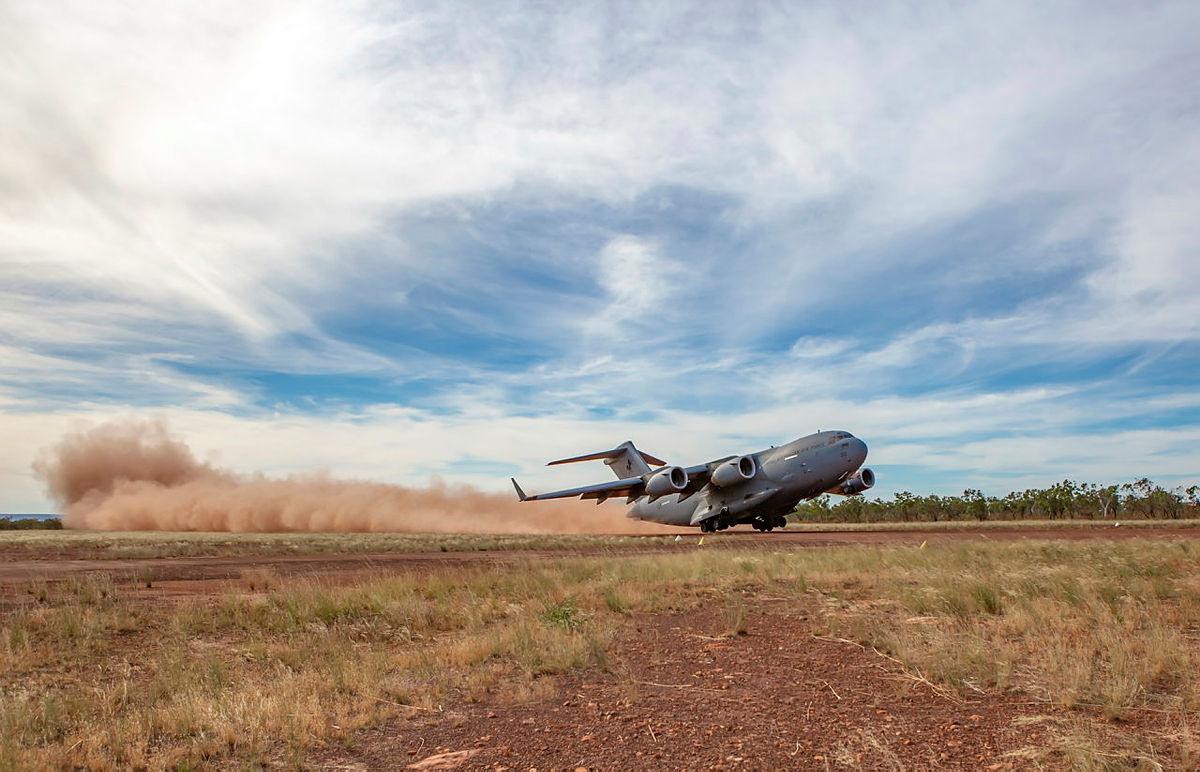
Northern Australia can expect to see more visits from US forces, which will create both economic and strategic benefits for Australia.
Two recent US government decisions are set to change how the US military, and particularly the US Marine Corps, will operate in northern Australia.
The first major change was the announcement at the 2020 AUSMIN meeting that the US and Australia intend to establish a US-funded, commercially operated strategic military fuel reserve in Darwin. The proposed facility will join a network of other US military strategic reserves spread across the Indo-Pacific in locations such as South Korea, Japan, Guam, Singapore, Hawaii and Alaska.
While the details of fuel types, grades and capacities have yet to be released, one would anticipate that they would cover the spectrum required to operate all types of military aircraft, ships and ground equipment employed by the US military.
When added to Prime Minister Scott Morrison’s earlier announcement of significant infrastructure works at Royal Australian Air Force Base Tindal, designed to support visiting US Air Force aircraft up to and including B-52 bombers, the fuel reserve cements northern Australia’s role as an integral part of the US deployment strategy in the Indo-Pacific.
As ASPI’s Peter Jennings wrote recently, ‘No one builds a big petrol station without planning to use it’, and you can say the same about constructing hardstands, fuel storage and weapon magazines at RAAF Tindal. We can certainly expect more frequent visits to RAAF bases Darwin and Tindal by US Air Force aircraft in the future.
The second recent major announcement from the US was the release of the commandant of the US Marine Corps’ planning guidance. General David H. Berger lays out a radical new vision for the marines covering force design, warfighting, education and training, core values, and command and leadership. In the guidance, Berger designates the III Marine Expeditionary Force, based in Okinawa, as the main focus of effort—showing that the Pacific is at the fore in the marines’ thinking.
Perhaps the biggest message in the commandant’s planning guidance is that the US Marine Corps will change the way it fights. Berger has determined that large, cumbersome equipment and concentrated forces will be easily targeted in an age of long-range precision weapons. Consequently, the marines need to act to change the calculus of any adversary.
The marines will become a lighter, faster, more agile force supported by weapons and sensors with longer range and endurance. The Abrams tanks and bridging battalions will go, artillery cannon batteries will be significantly reduced, and other capabilities such as fixed- and rotary-wing aviation are also being trimmed. Berger says training facilities and ranges are antiquated and his force lacks the necessary simulators to sustain its readiness.
This is where northern Australia plays a part. For the marines, a new strategy demands a need to train in a new way. The Marine Rotational Force—Darwin deploys because Australia offers a strategic location in the Indo-Pacific to conduct realistic, multi-faceted, high-end training. The feedback from the marines is clear—they love Australia and its physically and mentally challenging training facilities. And with the Pacific now the corps’ primary focus, expect bigger deployments in the future.
The Northern Territory hosts the best military training ranges in Australia and arguably some of the best the world. Bradshaw Field Training Area, Mount Bundey Training Area and the Delamere Air Weapons Range together amount to 12,000 square kilometres, or five times the size of the Australian Capital Territory. In US terms, that’s about the size of Connecticut, and in UK terms it’s more than half the size of Wales. Add the maritime training and firing areas in the Timor and Arafura seas, and the facilities and ranges in the Northern Territory can meet most of the training needs of visiting US forces. While it’s difficult for the US Marine Corps and US Army to find live-firing ranges on home soil where they can launch Hellfire missiles, opportunities abound in Australia.
Already electronically connected as part of the North Australian Range Complex, the vast open areas and associated airspace enable scalable manoeuvre exercises for land forces and air combat, close air support and bombing training for air forces. As the Mobile Threat Training Emitter System comes online it will also allow for training in the electromagnetic spectrum. These elements will enable combined arms training on a scale unachievable elsewhere, providing the perfect environment for the marines to apply their new strategy.
By further amalgamating training programs, Australian and US forces can exercise alongside each other, enhancing interoperability and strengthening deterrence. Importantly, they can also act as each other’s opponents, testing skills and concepts.
Both Berger and the newly appointed chief of the US Air Force, General Charles Q. Brown Jr, took their positions immediately following senior command appointments in the Pacific and are no strangers to Australia. They have both visited the Northern Territory in the past few years and are fully aware of the importance the bases and training ranges have for their respective services.
To remain relevant in a rapidly changing world, northern Australia’s training areas and ranges need to keep pace with the modern threat environment and accommodate modern techniques and procedures. They need to be treated and managed as an integrated weapons system in their own right, and their future development must be guided by a deliberate plan to invest, renew and upgrade. Implementing such a plan will produce a unique, advanced training environment that meets the needs of the Australian Defence Force and visiting US forces into the future—and, as an added benefit, will also attract regional and international partners.